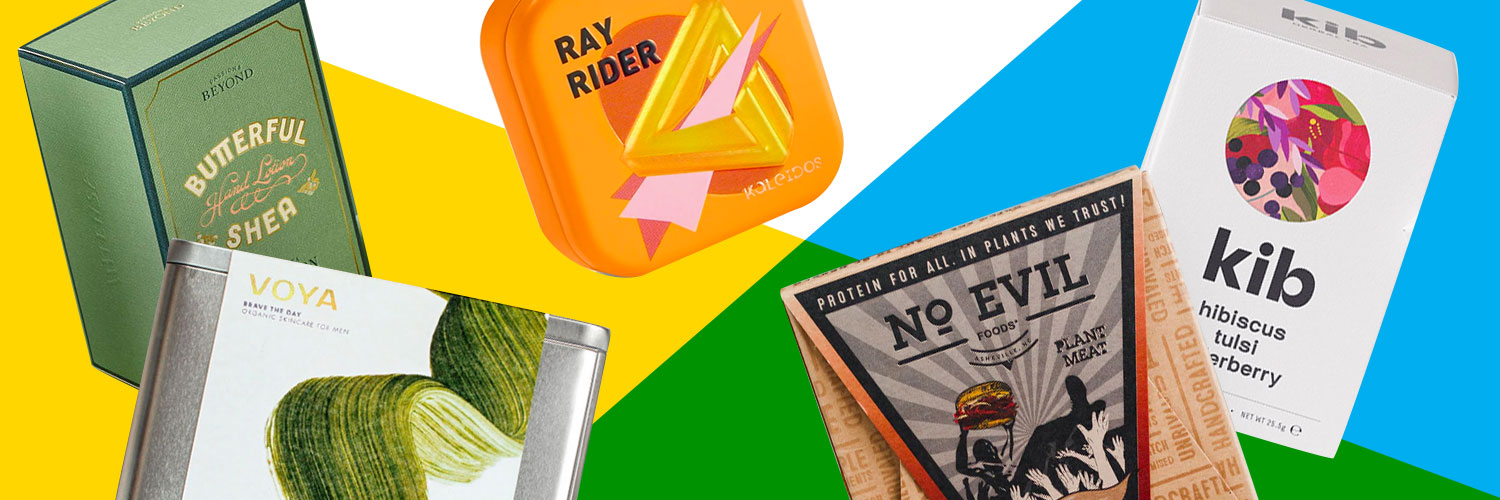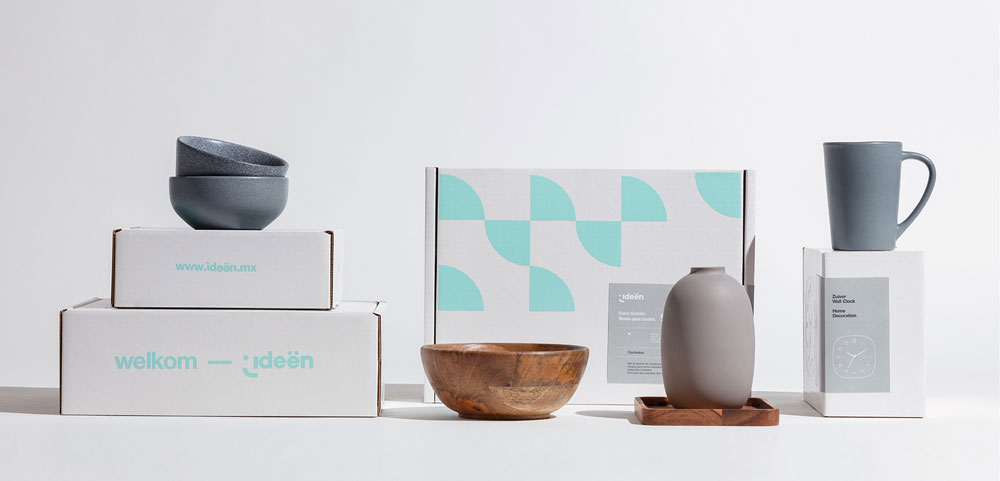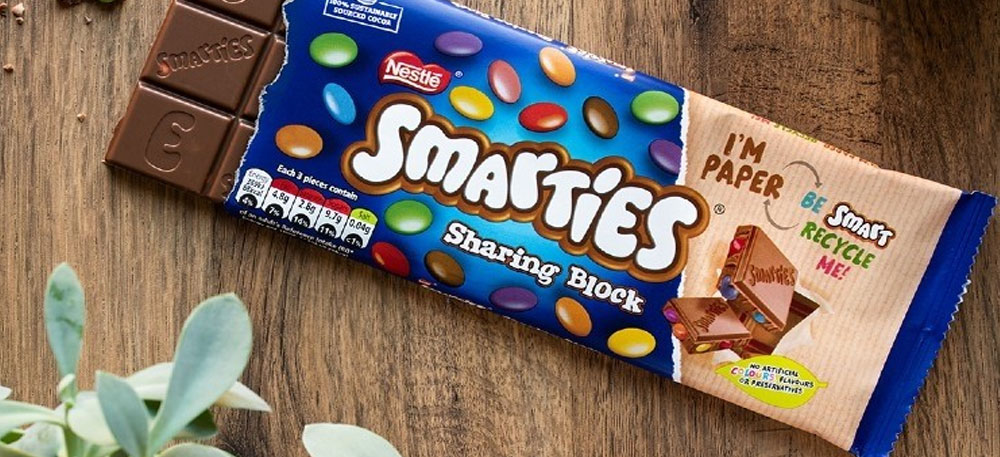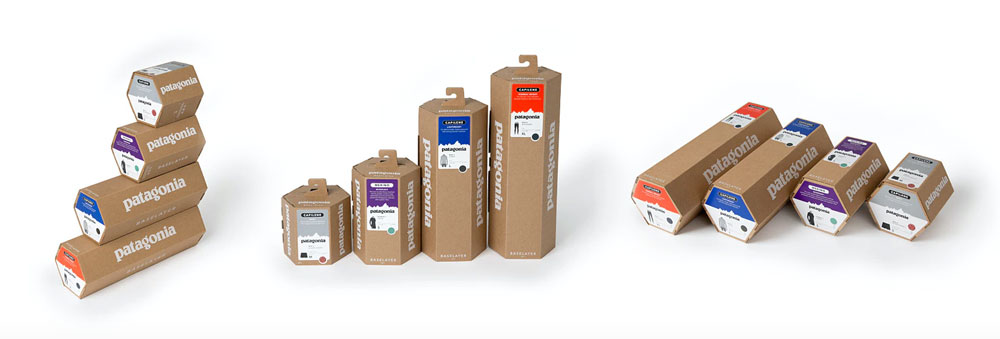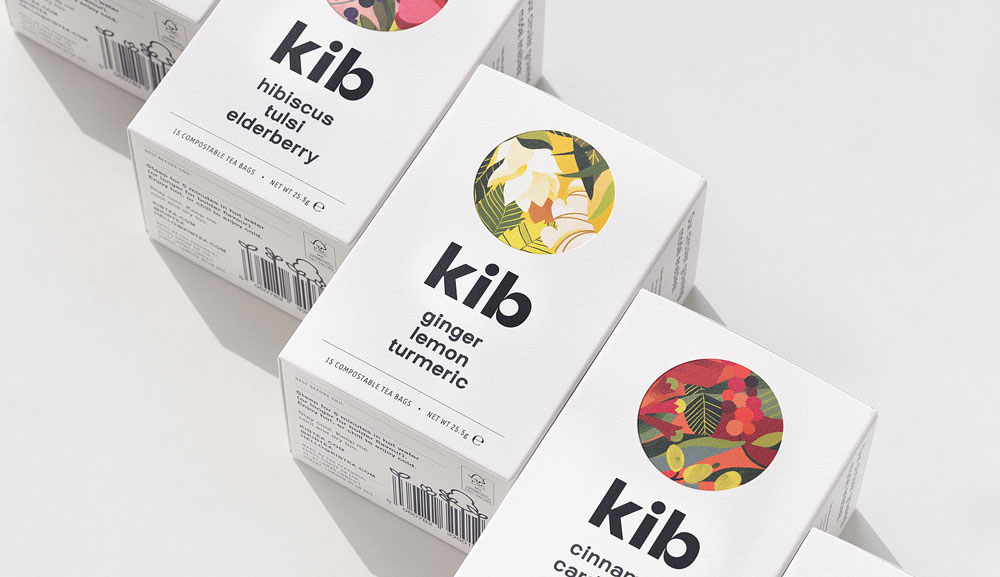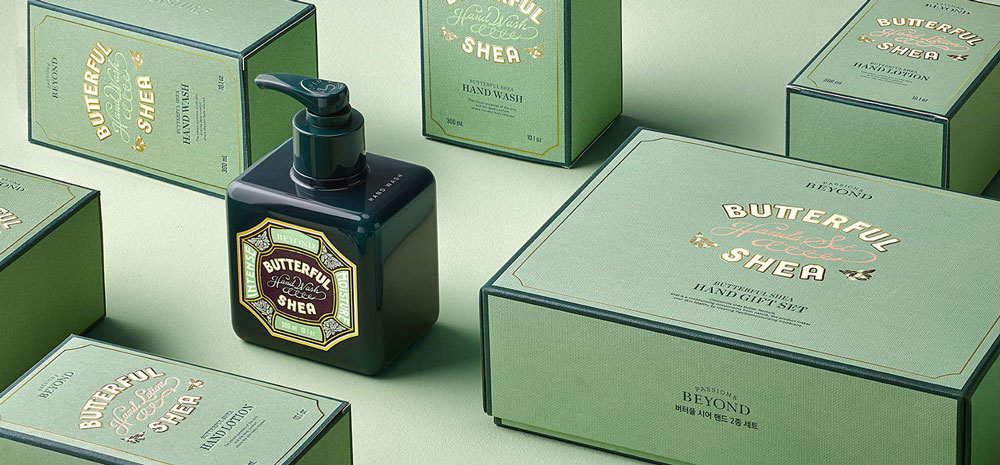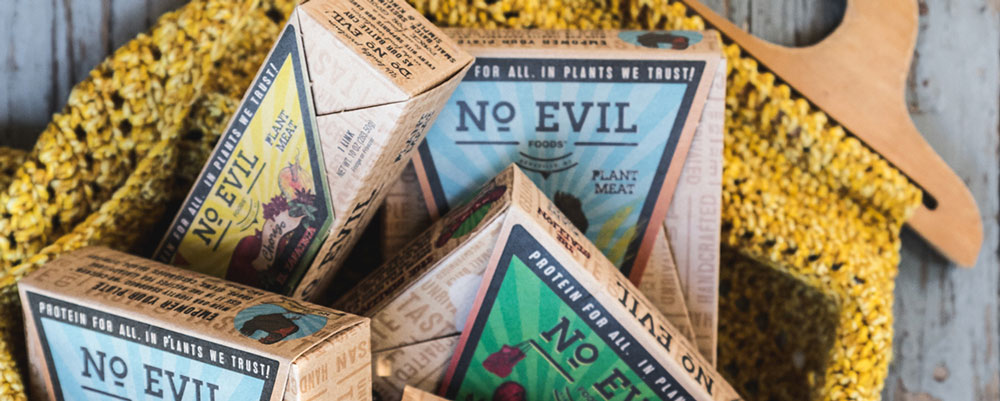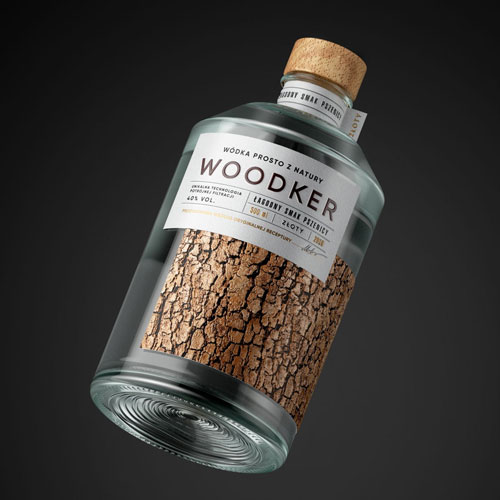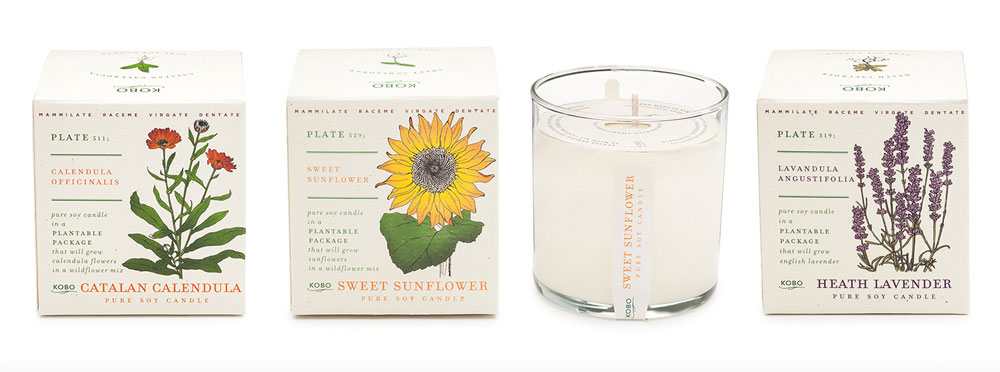As it stands, packaging design companies face an evolving landscape in 2021. Between (rapidly) evolving consumer tastes, a heightened awareness of environmental concerns, and significant advances to packaging-related technology, designers will be challenged to come up with some truly innovative packaging ideas. The e-commerce boom brought on by COVID-19 has also put pressure on designers to continue updating packaging to remain competitive with options online. We think they’re up to the task, and have seen plenty of recent packaging examples that will hold up well in the coming year.
In a recent report, we broke down seven product packaging design trends that will shape the industry. Those trends range from minimalism in luxury packaging to eco-friendly packaging to smart packaging that seems to be pulled straight from a sci-fi movie (next up, flying cars?). In this article, we’ll take a look at a few additional, recent examples of stellar packaging design that embody those trends.
1. VAPORIZER PACKAGING THAT GOES FOR THE GOLD
The Volcano Vaporizer just celebrated its 20th anniversary. As one of the earliest competitors in what is now a massive industry—marijuana, tobacco, and herbal vaporizers—Volcano felt the anniversary warranted something special. Ultimately, they designed a gold-plated version of their vaporizer, and designed flashy packaging to boot.
The packaging features a light print of the device’s sketched design, a picture of the gold device, and a larger swath of clean, matte black. It manages to pop through the use of a metallic laminate (in bright gold, obviously!) and a simple design. You can bet that, as minimalism continues to dominate design, more brands will turn to holographic laminates, metallized laminates, and other, similar laminates to achieve a similar level of flashiness without overwhelming the consumer with clutter.
2. CREATIVE PACKAGING FOR MINIMALIST LIFESTYLES
There are plenty of reasons why minimalism is in, whether that be consumer desire to simplify their lives, to make it easier to organize and clean, or to simply free up space for a better work-from-home experience. Mexican brand Ideen creates beautiful, understated home goods products, and recently wanted to update its packaging to better fit the brand. The result is a straightforward, coated paper box featuring light color palettes of grey, white, and light blue, and unobtrusive text.
3. PRIORITIZING RECYCLABILITY IN FOOD & BEVERAGE PACKAGING
In an effort to reduce waste, many brands are opting to use easily recyclable packaging materials. Nestle, for example, has recently updated the packaging for their Smarties chocolate bars (which sell close to 3.5 million units annually) with a recyclable paper wrapper.
The packaging still employs the colorful, playful look that has long defined the brand, but now achieves it in a more environmentally sustainable way (the packaging even includes a prominent message encouraging recycling). This is part of Nestlé’s recent $2.1 billion investment in improving packaging sustainability; clearly, eco-friendly packaging design is a trend that’s building momentum into 2021.
4. CLOTHING PACKAGING DESIGN THAT’S JUST RIGHT…SIZED
Sustainability is a topic that reaches far beyond using recycled or recyclable materials. Many companies are employing design and production practices that take the sustainability mission a bit further. Patagonia, which we highlighted for this reason in our 2021 trend forecast, has highlighted their Corporate Social Responsibility efforts with “rightsized” package design.
Their Baselayer clothing line recently rolled out new packaging that is hexagonal and extremely space efficient. This reduces air space in the packaging, and thus the materials used. The easily stackable packaging also allows for more efficient shipping and in-store stocking. Plus, the considerable uptick in sales (70% increase in retail sell-through) hasn’t hurt the appeal of this design solution.
5. TIME FOR ECO-FRIENDLY, LUXURY PACKAGING DESIGN
Almost 70% of consumers in the U.S. and Canada think it’s important that brands are sustainable. Naturally, companies are now investing in ways to address this demand. Interestingly enough, luxury watch companies are among the earliest adopters of a broad, sustainable approach to packaging. Nepto, a Parisian watch brand, recently committed to recycled paper and cardboard, as did other big names like Breitling, TAG Heuer, and Oris.
These companies, through the use of high-quality sustainable materials and clean design, are showing that sustainable packaging doesn’t need to come at the cost of visual appeal. Nepto’s understated branding, for example, uses clean lines, straightforward designs, and simple colorways, and works well with sustainable paperboard.
6. TEA PACKAGING THAT CALMS
Kib Herbal Tea wanted a few things from their packaging. First, it had to support their mission of ethical agricultural sourcing. Second, it had to highlight their ingredients (sourced from small, Ethiopian farms). Finally, it had to look good. The result was a fresh take on ethical, sustainable tea branding.
The front of each paper box features only a beautiful illustration (contained in a small circle, so as not to overwhelm), three ingredients, and the brand name. The colors all fall within an earthen palette, which helps connect the ingredients with the packaging—ultimately, each box is a beautiful combination of sustainability, minimalist design, and an attention to brand.
7. AN OLD-FASHIONED PACKAGING AESTHETIC FOR MODERN BRANDS
South Korean beauty brand Passion & Beyond collaborated with NY-based graphic designer Nick Misani to create some stunning packaging for its Butterful Shea lotion bottles. Recalling a 1920’s barber shop aesthetic, the unique green cube containers are branded with a hexagonal label and a retro feel that communicates old-fashioned quality.
The lotion bottles fit snugly in a textured paper-based box that maintains the heritage aesthetic with three different typefaces enhanced with debossing techniques and delicate gold foils. To top it all off, the box’s dark green edges and peach color inside fully communicate and compliment the attention to detail that is expected of the brand’s product.
8. BOLD COLORS FOR COSMETICS PACKAGING
For cosmetic brands that want to give their customers an exciting new look, stunning packaging is a must. When these brands offer a range of color options, it also helps to design varied packaging to showcase the contained color. The Space Age Highlighter collection from Kaleidos, for example, features a larger container with intricate, bright patterns and a reflective exterior.
Inside that container are individual cases for each highlighter color, with each case featuring a different icon, color, and finish to embody the individual style. The vibrant, color-shifting packaging ranges from glittery purple, to a powerful, solar yellow, and to various other hues and finishes. The packaging for The Space Age Collection is truly out of this world!
9. UN-WRAPPING MEMORABLE UN-WRAPPING EXPERIENCES
Opening up the packaging that holds your product is part of the fun, at least it should be. With a passion for plant-based meats, No Evil Foods drew inspiration for its packaging from a bevy of sources. The sturdy paperboard packaging recalls the natural feel of a kraft paper bag; its funky illustrations featuring hip personas are reminiscent of craft brew companies. The entire carton is folded origami style, giving the buyer a unique opening experience—as if they had just bought this no-meat meat from the butcher shop itself.
10. LUXURY PACKAGING TRENDS IN 2021: AN ARTISTIC CELEBRATION OF NATURE
Many brands have drawn on the material and geographic origins of their products to inform their packaging design, transforming ordinary packaging into truly breathtaking design. VOYA’s skincare products are made with organic ingredients, most notably wild seaweed harvested off of the west coast of Ireland, so it’s no surprise that the beauty brand’s 2020 Christmas packaging displays a gorgeous green brushstroke reminiscent of seaweed on the sheath that surrounds the brand’s reusable metal containers. (Be sure to check out VOYA’s shimmery, ocean-inspired packaging from 2019, too).
The design for Woodker’s vodka bottles, on the other hand, was inspired by Poland’s Bialowieza Forest. The bottom of the glass bottle is reminiscent of a tree’s rings, and the cap looks like wood as well. It’s the label that’s the most captivating, though—a realistic bark covered in a textured varnish for a tactile experience.
11. SMART PACKAGING TO MAKE YOUR CUSTOMERS…WELL…SMARTER
App-based AR packaging took a little while to pick up speed since its 2010 boom, but advances in technology have made more and more brands pursue smart packaging capabilities that do more than just entertain their customers—they give them information they can use. One such company preparing to roll out a refreshed new look with AR capabilities is the household brand Morton Salt.
The new packaging stays true to the brand with the same familiar Morton salt girl and Morton colors, opting for a more modern look with geometric color blocking and a sans serif type, as well as a How2Recycle label. Each box or container will have a QR code that customers can scan to choose from a variety of AR experiences, to include recipes using the ingredients you have in your kitchen.
Also on the short list of using QR for good: Jones craft soda launched limited-edition Vote 2020 labels to make it that much easier for consumers to register to vote straight from their smartphones.
12. PLANTABLE PACKAGING THAT KEEPS ON GIVING
Luxury candle brand Kobo’s Plant the Box Collection introduces an original, innovative packaging solution for its pure soy candles. Each white box has delicate lettering and features a gorgeously simple drawing of the plant that inspires the candles’ scent. Because the boxes are made of 100% post-consumer waste recycled packaging and vegetable-based inks, they are 100% biodegradable, a win for sustainability.
What’s even more alluring about this packaging (and why it was featured in Nylon’s Don’t Sleep on This series) is that the boxes are infused with plantable seeds that match the scent of the candle itself. If you love the smell of the crushed mint or the wild tomato vine candles, for example, you can eventually grow your own by simply planting the packaging, giving a whole new level of self-care to a brand designed with personal and environmental wellness in mind.
PACKAGING’S FUTURE IS BRIGHT, AND FULL OF NEW DESIGN TRENDS
The packaging design trends currently picking up steam may not all be new, but they are certainly enjoying a renewed attention. Companies are constantly looking to stand out, and are recognizing these design approaches—like minimalism, sustainable material sourcing, flat graphics, and more—as valuable additions to their tool belt. It’ll be exciting to see how brands continue to raise the bar on design in the coming year, and how the trends create more spectacular packaging examples like the ones above.
FREQUENTLY ASKED QUESTIONS
Great packaging design delivers an experience to customers that can add delight in unexpected ways. It’s about more than customers receiving their product all in one piece; innovative and thoughtful packaging can tell a story about the product and communicate a sense of purpose that they will then associate with the brand itself.
When beginning the design process, brands should consider a number of things. They need to determine what material to use for their product, and how they want to display their brand name and any other information on the packaging. It helps to look at packaging trends in one’s industry and research one’s ideal customer in order to determine exactly how one’s packaging design can best represent the product and the brand.
The cost of packaging design depends on many things, to include the size of your product, which designer you choose, the packaging materials, manufacturing costs based on said materials, and shipping costs.
The packaging design process follows a series of steps to prepare a product for retail sales. It starts with concepting and designing, moving to printing and manufacturing, and ends with shipping, delivery, and marketing.
Here are 5 of our favorite resources for creative packaging trends, news, and inspiration:

